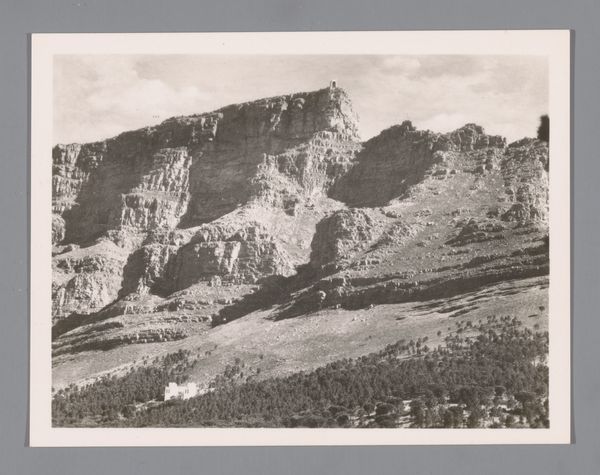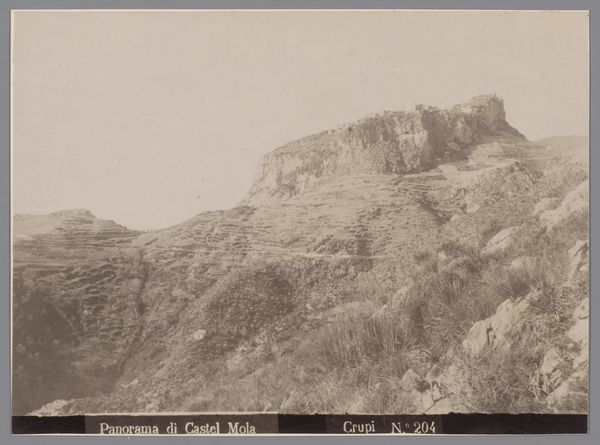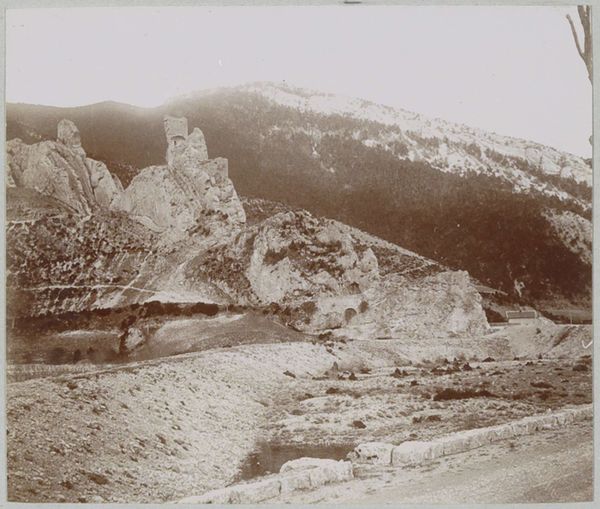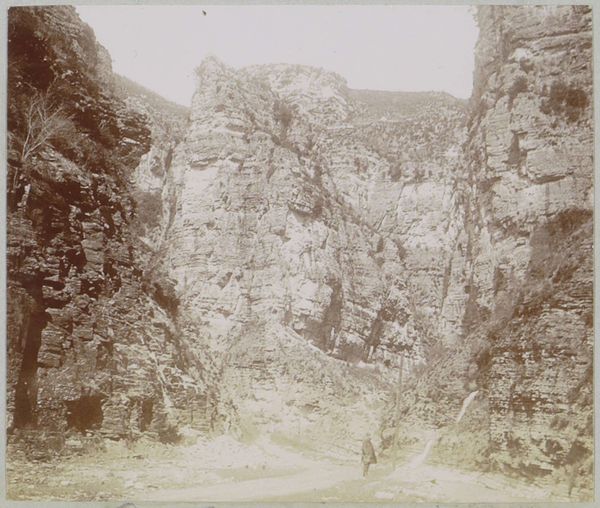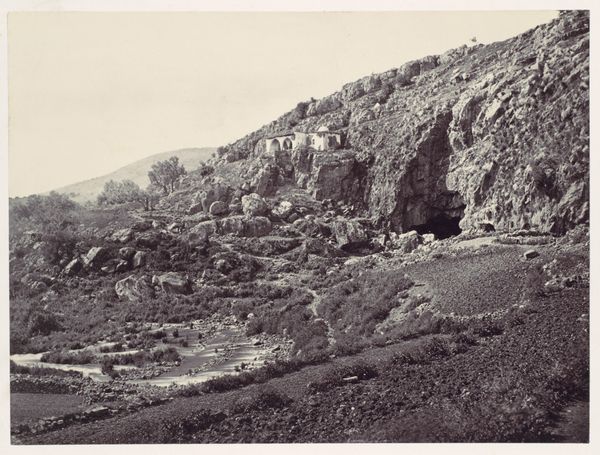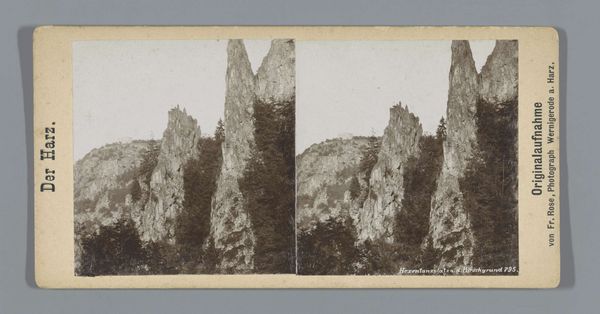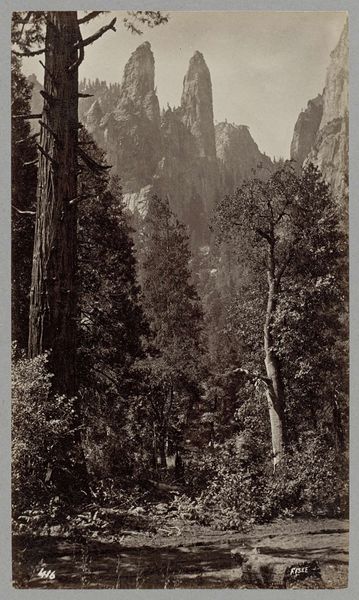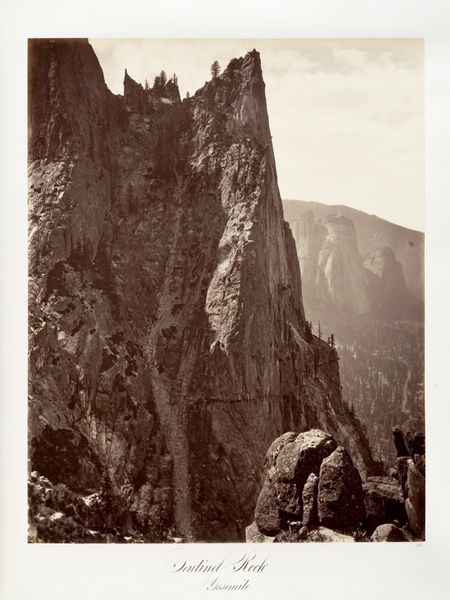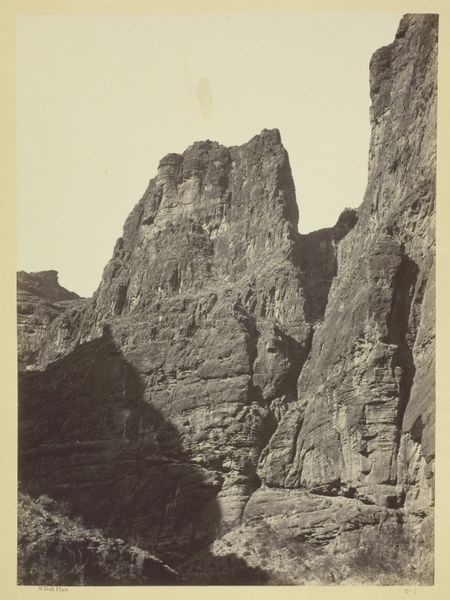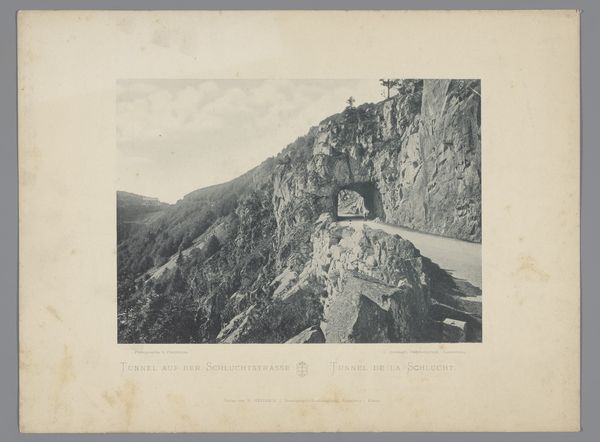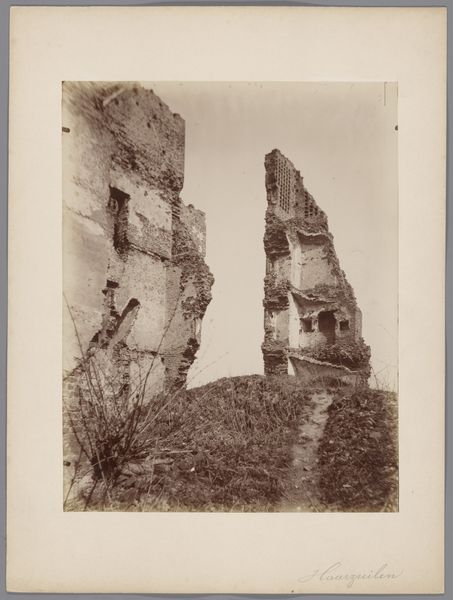
Dimensions: height 206 mm, width 266 mm
Copyright: Rijks Museum: Open Domain
Curator: This photograph, titled "Gezicht op de Hexentanzplatz in de Harz", presents a captivating vista of the Harz Mountains. It was taken in 1892. Editor: Immediately striking. The strong verticality, the jagged peaks piercing the sky – a classic Romantic composition, almost aggressively so. What is the photographic process used? Curator: It's a silver gelatin print, allowing for a rich tonal range. Notice the way the light models the rock formations, emphasizing their rugged texture and imposing scale. The image evokes a sense of awe and perhaps even a touch of unease. Editor: I’m also intrigued by its material implications. Silver gelatin, in 1892… there was significant industrial infrastructure to enable such productions at scale, right? Someone, somewhere, mined the silver, refined it, prepared the emulsions. What can you tell us about the publisher of this photographic print? Curator: This photograph was published by E. Mertens & Cie, and that tells us about the expanding market for tourism imagery. Beyond that, consider the inherent geometric underpinnings of its visual space: diagonal lines of trees and stone that compose an ordered experience of nature. Editor: Geometric indeed. Although nature presents a perceived ideal through its geometric patterns, the materials used to make this piece still imply that humans made this representation from raw goods extracted somewhere in the world through forced, if not grueling labor. The Romantics certainly idealized the aesthetic form of nature, conveniently skipping its dark matter. Curator: Indeed, the human element remains, a quiet tension beneath the sublime beauty of the landscape. Its value, of course, exists through this carefully controlled photograph and mass production. Editor: Mass production meant that it reached a new viewing public. Curator: Which alters our response. Instead of nature alone, we find nature mediated. Perhaps the allure rests now in the historical documentation. Editor: A tangible object bearing silent witness to changing processes of labor. Both a compelling image, and a dense piece of material history.
Comments
No comments
Be the first to comment and join the conversation on the ultimate creative platform.
